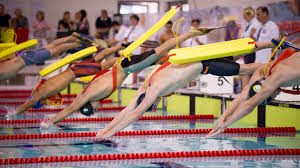
Life-saving sport is the only sport whose skills are first learned for humanitarian purposes.
Life-saving sport, also known as lifesaving or rescue sport, has a rich history rooted in the traditions of life-saving and water rescue techniques. It evolved as both a competitive and practical discipline aimed at improving the skills needed for water rescues. Here’s an overview of its history and its role in the Olympics:
Early Origins
Founding of Life-Saving Organizations:
The origins of life-saving sport date back to the 19th century, when life-saving organizations were formed in response to increasing incidents of drowning. The Royal National Lifeboat Institution (RNLI) in the UK (founded in 1824) and Surf Life Saving Australia (SLSA, founded in 1907) were pivotal organizations promoting water safety and life-saving skills.
Development of Competitions:
Early life-saving competitions aimed to test and improve the skills of life savers, including swimming, rescue techniques, and first aid. These events helped train and motivate rescuers while promoting public awareness of water safety.
Emergence as a Formal Sport
Standardization and Expansion:
By the 20th century, lifesaving competitions became more structured and standardized. Organizations like the Fédération Internationale de Sauvetage Aquatique (International Life Saving Federation, ILS) were established to promote and govern lifesaving sport worldwide.
Surf Life Saving Events:
Australia, with its long coastline and surf culture, played a key role in popularizing lifesaving competitions, particularly surf lifesaving events that incorporated swimming, running, paddling, and rescue techniques.
Ascendancy in Olympic History
Demonstration Sport:
Lifesaving sport has yet to be recognized as a full medal sport in the Olympics, but it did feature as a demonstration sport at the 1900 Paris Olympics. The event showcased life-saving techniques and water rescues, aiming to highlight the importance of aquatic safety.
Continued Advocacy:
Various national and international lifesaving organizations have advocated for the sport’s inclusion in the Olympics, emphasizing its relevance and athleticism. Despite this, lifesaving sport has not been reintroduced into the Olympic program.
International Competitions:
Although it has not ascended to Olympic status, life-saving sport is still recognized globally. The World Lifesaving Championships (Rescue Series) is held every two years under the ILS and features pool, beach, and surf events, attracting athletes from around the world.
Current Status and Future Prospects
Youth and World Championships:
The growth of international championships and youth competitions continues to elevate the sport’s visibility. Competitions like the World Games also provide a platform for lifesaving events, showcasing their intensity and athleticism.
Potential for Olympic Inclusion:
With the increasing emphasis on youth, health, and safety in sports, there remains potential for lifesaving sport to be considered for future Olympic Games. The push for the inclusion of more diverse and relevant sports may create opportunities for lifesaving events to be incorporated, especially in host countries with strong beach and surf lifesaving cultures.
Lifesaving sport, though not yet a full Olympic sport, continues to be a respected and competitive discipline that highlights the importance of water safety, skill, and athleticism. Its deep historical roots and ongoing global competitions demonstrate its enduring impact and relevance.